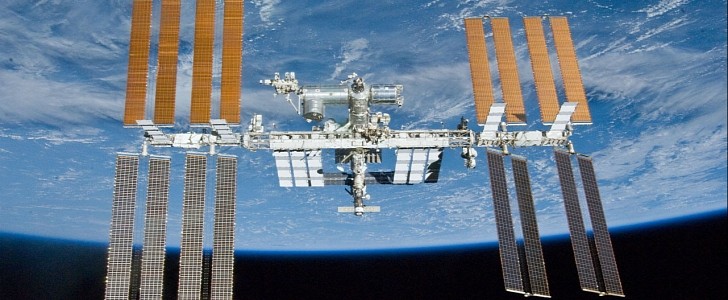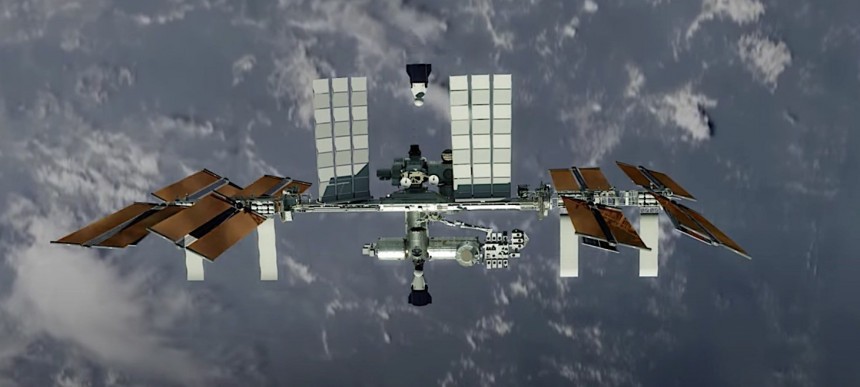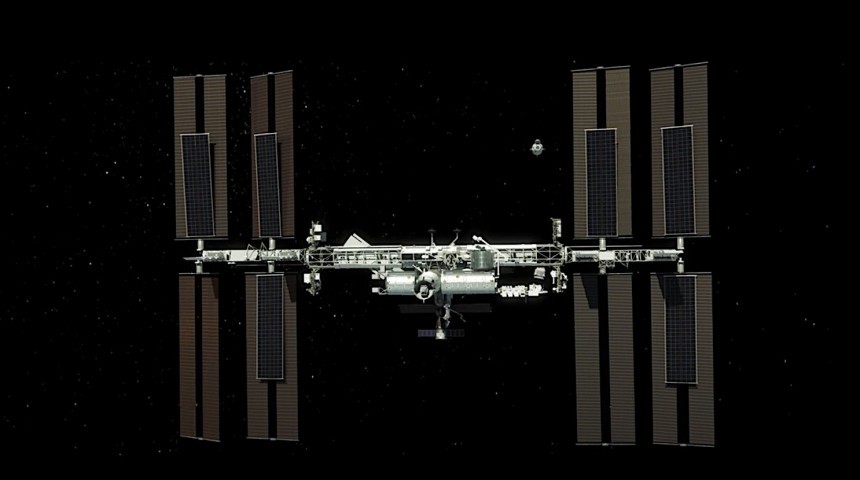Besides just being the largest man-made object ever put into space, the International Space Station was built to signify that after the end of the Cold War, the world was about to enter a new age of cooperation for the benefit of all mankind.
But after an announcement from Roscosmos explicitly intending to withdraw all Russian ISS crew members by the end of their current obligations, there's a feeling that some things have never changed. It started with news from Russian state media broadcast worldwide that Roscosmos chief Yuri Borisov had just informed Russian President Vladimir Putin of their intention to withdraw all Russian personnel from the International Space Station after the conclusion of its final crew rotation in 2024.
The announcement comes mere months after NASA and, by association, the European Space Agency announced they intend to operate the two-decade-plus old space station in its geostationary orbit until at least 2030. After which point, the station is anticipated to de-orbit and burn up in the Earth's atmosphere and splash down somewhere in the remote Pacific Ocean.
Without the long-term support of the nation that launched Zarya, the first ISS module, to space 23 years ago, those intentions may be in jeopardy. As of July 2022, the final Russian mission slated to dock with the ISS is Soyuz MS-27, sending two Russian cosmonauts and one American astronaut to the station.
Assuming current intentions come to fruition, it would be the final trace of cooperation between Roscosmos and western space agencies in orbit. What the domain of Low Earth Orbit space stations after this decisive date is something that will only reveal itself in time. But there are more than a few clues from the pages of history as to what it might look like.
The former USSR had the distinction of launching the first manned space station into Low Earth Orbit 51 years ago, in the form of the Salyut program beginning in 1971. Between the science-oriented Salyut missions and the classified military mission under the Almaz program, the Iron Bloc held a slight upper hand on Western space programs in the realm of human-crewed space stations for much of the 1970s.
Meanwhile, the American Skylab station launched aboard a modified Saturn V Moon Rocket, bringing NASA right in step with the Soviets. Skylab sent five separate crew rotations to Skylab before it was de-orbited and destroyed by the atmosphere on July 11, 1979. Apart from a brief break in tensions for a joint Apollo-Soyuz mission in July 1975, that'd be the last large-scale cooperation between the Soviets and Americans in space until the Mir Space Station almost 20 years later.
With this in mind, it's logical to assume that a space station dynamic between eastern and western space programs is somewhat similar to the conditions of the 1970s. A scenario where the governments of North America and Europe work independently of Russian, Chinese, Iranian, and even North Korean space agencies. The Chinese especially have a leg-up in this arrangement, with their Tiangong-1 space station launching in 2011 and its replacement in the combined Tianging two and three, which has been occupied since the summer of last year.
The prospects of Russian assets and technology being integrated into the China National Space Administration plans seem fairly plausible. As it stands, the world will have to wait at least 24 months before there's a definitive plan announced by Roscosmos regarding their path forward in space.
In the larger context of a new looming space race to reach both the Moon and Mars on the horizon, there's every chance this seemingly minor inconvenience to the ISS could have profound effects on the direction of future space races for decades to come. How the scenario plays out will, at the very least, will be fascinating to watch.
The announcement comes mere months after NASA and, by association, the European Space Agency announced they intend to operate the two-decade-plus old space station in its geostationary orbit until at least 2030. After which point, the station is anticipated to de-orbit and burn up in the Earth's atmosphere and splash down somewhere in the remote Pacific Ocean.
Without the long-term support of the nation that launched Zarya, the first ISS module, to space 23 years ago, those intentions may be in jeopardy. As of July 2022, the final Russian mission slated to dock with the ISS is Soyuz MS-27, sending two Russian cosmonauts and one American astronaut to the station.
Assuming current intentions come to fruition, it would be the final trace of cooperation between Roscosmos and western space agencies in orbit. What the domain of Low Earth Orbit space stations after this decisive date is something that will only reveal itself in time. But there are more than a few clues from the pages of history as to what it might look like.
Meanwhile, the American Skylab station launched aboard a modified Saturn V Moon Rocket, bringing NASA right in step with the Soviets. Skylab sent five separate crew rotations to Skylab before it was de-orbited and destroyed by the atmosphere on July 11, 1979. Apart from a brief break in tensions for a joint Apollo-Soyuz mission in July 1975, that'd be the last large-scale cooperation between the Soviets and Americans in space until the Mir Space Station almost 20 years later.
With this in mind, it's logical to assume that a space station dynamic between eastern and western space programs is somewhat similar to the conditions of the 1970s. A scenario where the governments of North America and Europe work independently of Russian, Chinese, Iranian, and even North Korean space agencies. The Chinese especially have a leg-up in this arrangement, with their Tiangong-1 space station launching in 2011 and its replacement in the combined Tianging two and three, which has been occupied since the summer of last year.
The prospects of Russian assets and technology being integrated into the China National Space Administration plans seem fairly plausible. As it stands, the world will have to wait at least 24 months before there's a definitive plan announced by Roscosmos regarding their path forward in space.









